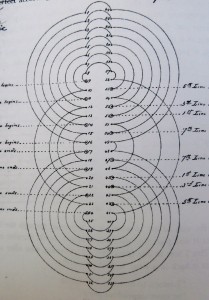
Benjamin Franklin (1706-1790), a Founding Father of the United States, is known to have excelled in multiple studies. He was a recognized polymath and one of the most influential personalities of his time. But one of Franklin’s lesser celebrated accomplishments was his amusement in creating magic squares, and even magic circles. What is so intriguing about these numerical designs is that they hold great secrets yet today, and so the Franklin Squares might be considered his most mysterious of constructions.
The attraction to magic squares is traced back thousands of years. One of the first designs realized is called the Lo Shu magic square. As the legend goes, rising from the Yellow River in China, was a turtle noticed to have an amazing pattern displayed on the back of his shell. The pattern was in a 3×3 array. It comprised of a series of dots (filled and open) that represented the numbers 1 to 9. The arrangement of the numbers was deemed to express ultimate balance, and became an important symbol dispensing immense wisdom.
Magic squares are numerical grids where the sum of the horizontal, vertical, and diagonal rows, all equal the same amount. Benjamin Franklin found himself charmed by these properties, and would often strive to produce magic squares of his own. Most of Franklin’s squares, however, presented the unique feature of bent diagonals giving the magic sum, instead of straight. He called his 16×16 magic square (shown below) the ‘most magically magical of any magic square ever made by a magician.’ Today, many mathematicians and mystics would agree.
The methods in which Benjamin Franklin used to build his squares are not known for certain. In one of his letters to a friend (James Logan), he said that he could fill the cells of magic squares as fast as he could write the numbers. It is believed he must have discovered methods to produce his magic squares since the filling of cells are way too numerous to randomly do and embrace the magical characteristics.
Techniques Franklin may have used have been suggested. But these are using the squares themselves, and require back tracking. The question continues to be asked, how did Franklin come up with these methods to use in the first place? We may never know. Franklin did not provide any explanations.
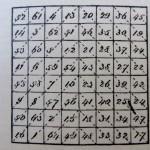 An example of Franklin’s 8×8 magic square is shown on the right. The rows, columns, and bent diagonals provide the sum of 260. There are many other fascinations to notice too, like the 4 corners with the center 4 squares and the parallel bent diagonals add to 260. Half of these will also equal half of 260.
An example of Franklin’s 8×8 magic square is shown on the right. The rows, columns, and bent diagonals provide the sum of 260. There are many other fascinations to notice too, like the 4 corners with the center 4 squares and the parallel bent diagonals add to 260. Half of these will also equal half of 260.
Even though Franklin made some fantastic magic squares, he felt his time in producing these may have been used more wisely. He shared this sentiment, and focused on what he considered more urgent matters. Nonetheless, it seems he couldn’t completely abandon his desire to continually contemplate them throughout his life. This intense attraction may be explained by a magic square’s qualities and connections to the mind (to which he may not have fully understood).
It’s been said, “A study of magic squares may have no practical application, but an acquaintance with them will certainly prove useful, if it were merely to gain an insight into the fabric of regularities of any kind.” (Paul Carus, Magic Squares and Cubes, published 1908)
As more study, and understanding, continues with magic squares, it is being discovered they hold mathematical symmetries which may trigger the inner senses of man. As mentioned in Clifford Pickover’s book entitled The Zen of Magic Squares, Circles, and Stars, they act like Koans. These are contemplative questions, stories, or statements used in Zen practice to awaken thought and connect to something deeper. An example of such is “Two hands clap and there is sound. What is the sound of one hand?”
Numbers of a magic square can awaken thought too. The numbers reveal Truths, and offer something to which can be illustrated for an eye to absorb. Not only are there designs appealing to the nature of man noticed within them (example shown above), but the methods used to create them can also reveal pleasing geometric shapes (Franklin’s 8×8 magic square diagram first image shown). The intrinsic value of numbers, when balanced, display ‘magical’ forms and cannot help but share the work of some possible Grand Architect of this universe.
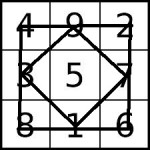 (For those that worked on the Maranatha Puzzle, I find the 3×3 magic square to be interesting. The outer even and odd numbers can be used to provide the ‘tilted square inside the straight’. The point in the center offers the means to create the Key of the puzzle. Yes, some points of the hexagram would be outside the square, but Ifind that all the more intriguing; as mystery should never be confined.)
(For those that worked on the Maranatha Puzzle, I find the 3×3 magic square to be interesting. The outer even and odd numbers can be used to provide the ‘tilted square inside the straight’. The point in the center offers the means to create the Key of the puzzle. Yes, some points of the hexagram would be outside the square, but Ifind that all the more intriguing; as mystery should never be confined.)

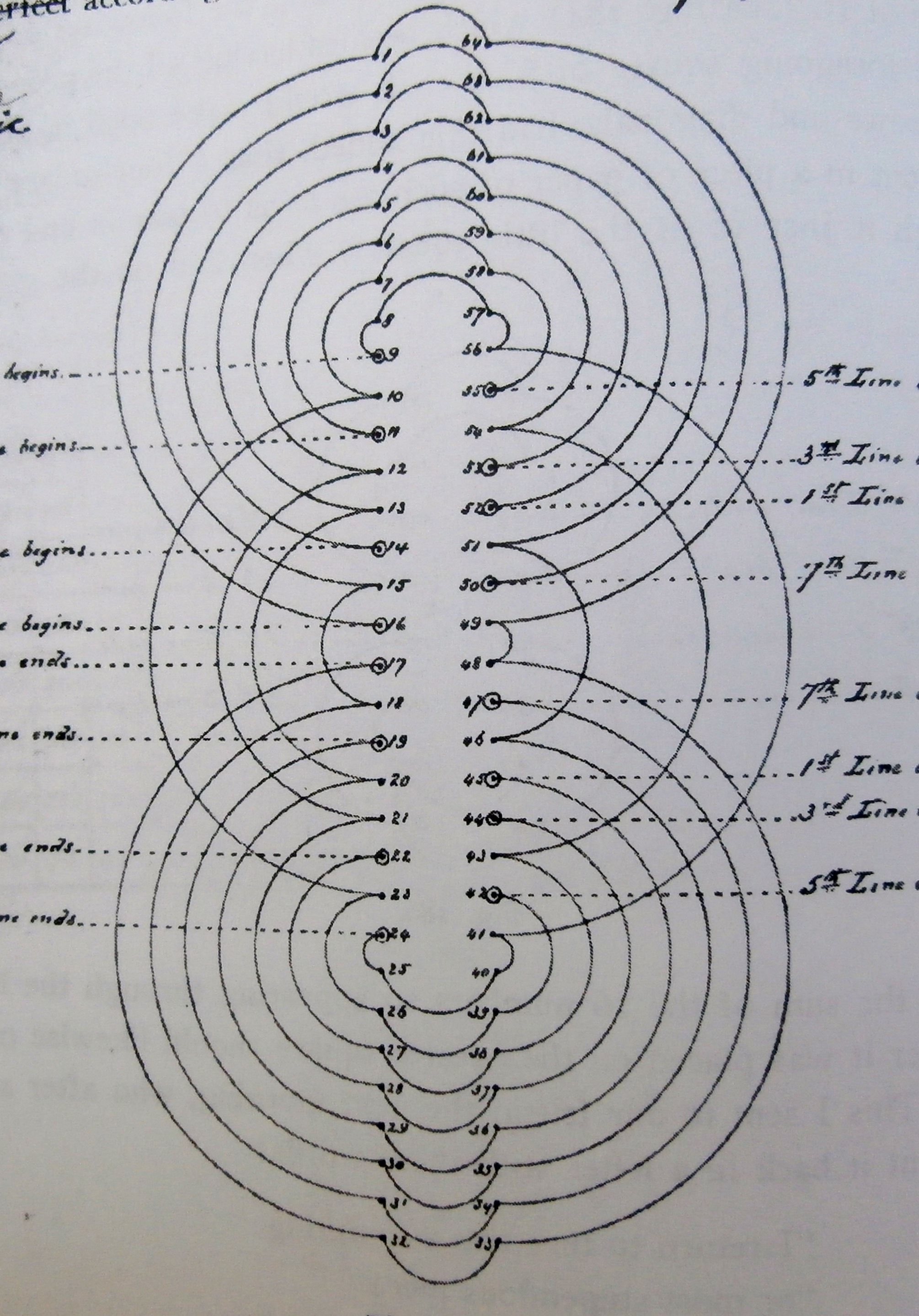
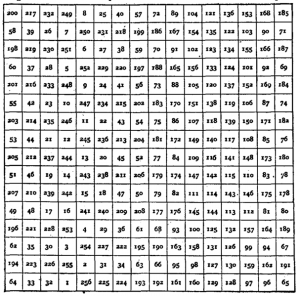

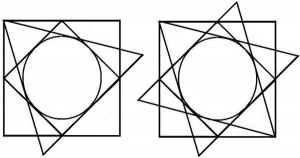
Whats also interesting is that the odds and evens bith add up to 20, respectively; with 5 left in the center, divisible into twenty by four.
I was just imagining of applying the tilted Maranatha hexagram to the Sator square a few days ago. Your 3 x 3 square preempts me to it.
Pingback: A Journey - Page 1081
Maybe Franklin used methods similar to the one used in the magic square of the pyramid cipher:
http://www.borderschess.org/Pyramid%20Cipher.htm
It also begs the question, was his interest in magic squares related to ciphers?
The tilted square inside the straight also represents Pythagorean thinking. In one of the dialogues of Socrates, he gets a slave to draw this figure and deduce that the smaller square must have an area half of the bigger square. Pythagoras would know this well: if the side of the bigger square is 2, the side of the smaller square would be the square root of 2.
I don’t know if freemasons make the connection between the geometrical figure and the magic square, but I think it’s quite possible.
If you read Dan Brown’s “The Lost Symbol” and you pay attention to the implications, it should become fairly clear why Franklin chose the properties he did for his magic squares.
Thank you, Jenny, for posting this. The first image looks like my solve to a masterful poem.